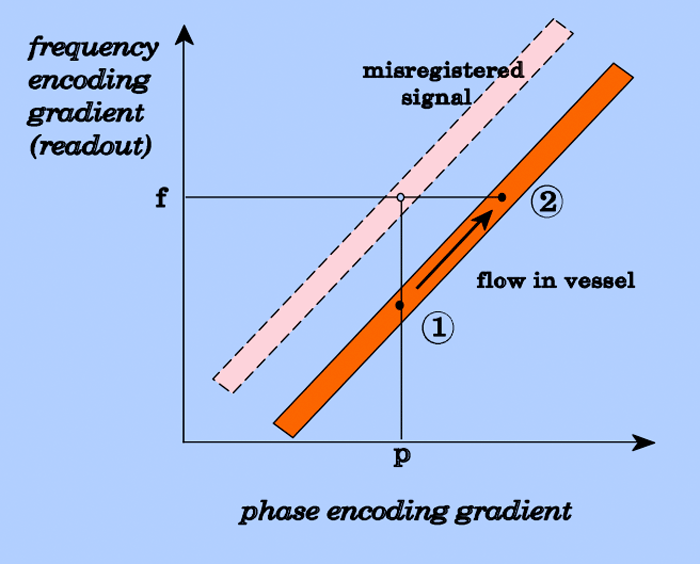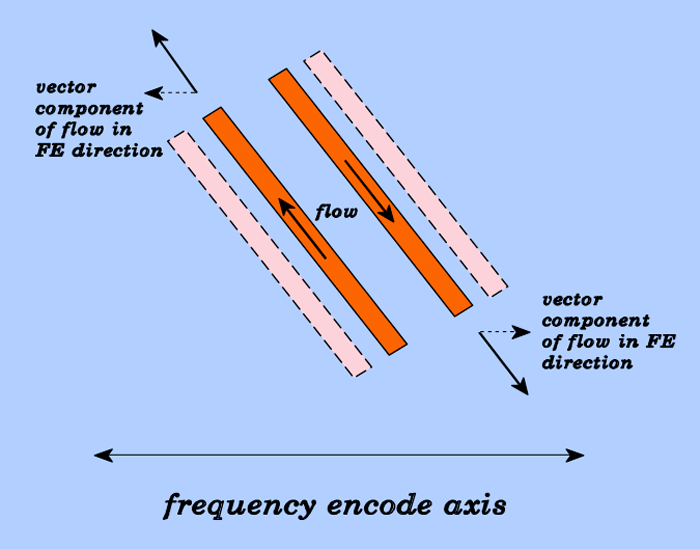|
In routine MR imaging, a pixel is spatially encoded by both phase and frequency. This process is not instantaneous, and in general, phase encoding is performed first. If a spin moves between the times of phase encoding and frequency encoding, its apparent position in the image will be artifactually displaced from its true position. This phenomenon is shown in the image right.
Spatial misregistration of flow is most prominent for vessels lying within the plane of imaging. It is accentuated by increased TE (since this increases the interval between phase-encoding and frequency readout). It is also prominent on GRE images as well as any sequence where gradient moment nulling has been used.
|
For most sequences it is possible to predict the direction of flow when a flow-misregistration artifact is noted. One simply looks to see on which side of the vessel the artifact appears in relation to the frequency-encode axis. The artifact will lie on the side of the vessel where there is a vector component of flow. From this information the flow direction can be predicted in most cases. One should be cautioned, however, that when certain gradient structures or imaging techniques are used, this appearance may be reversed. Notwithstanding this limitation, the flow displacement artifact sign may be useful in routine imaging, particularly when a vascular malformation is encountered.
Advanced Discussion (show/hide)»
No supplementary material yet. Check back soon.
References
Larson TC III, Kelly WM, Ehman RL, Wehrli FW. Spatial misregistration of vascular flow during MR imaging of the CNS: cause and clinical significance. AJNR Am J Neuroradiol 1990;11:1041-8.
Larson TC III, Kelly WM, Ehman RL, Wehrli FW. Spatial misregistration of vascular flow during MR imaging of the CNS: cause and clinical significance. AJNR Am J Neuroradiol 1990;11:1041-8.
Related Questions
Why do gradient echo (GRE) sequences accentuate the signals from flowing blood or CSF?
Why do gradient echo (GRE) sequences accentuate the signals from flowing blood or CSF?



